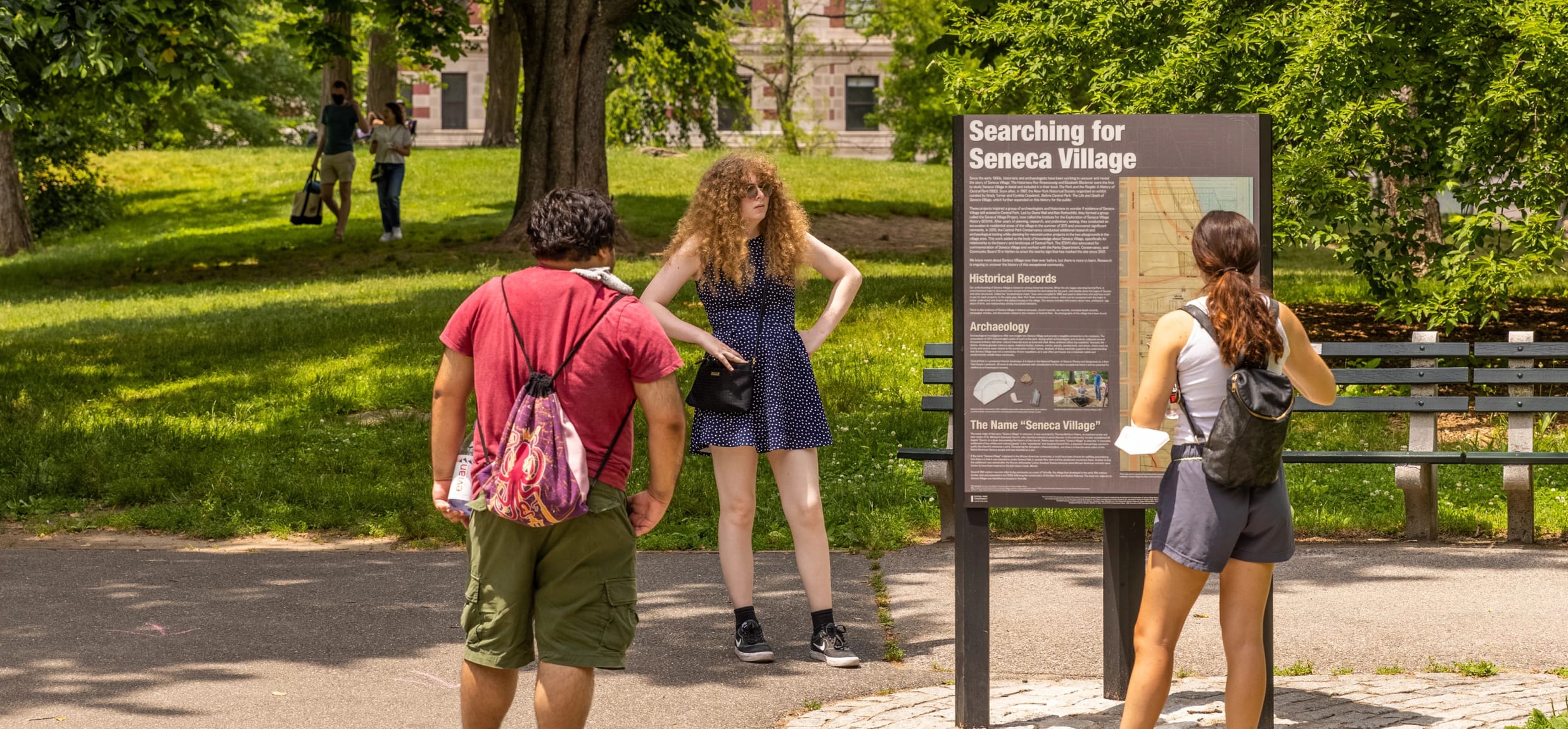Guide to Seneca Village Outdoor Exhibit

Explore the history of this area like never before with Discover Seneca Village, an outdoor exhibit of interpretive signage that gives visitors a glimpse into this fascinating community.
Seneca Village was a predominately African-American community that existed prior to Central Park. Beginning in 1825, African-Americans living downtown started to buy property in the West 80s. Researchers believe this new community provided refuge from the crowded conditions and racial discrimination that were prevalent in downtown New York at the time. By 1855, Seneca Village consisted of approximately 225 residents, including African-Americans, Irish immigrants, and a small number of German immigrants. Many of the African-Americans owned their homes, making the community the largest concentration of African-American property owners in the City.
Explore the history of this area like never before with Discover Seneca Village, an outdoor exhibit of interpretive signage that gives visitors a glimpse into pre-Park history, and highlights decades of research about this extraordinary community.
Exhibit highlights:
- Visit the former locations of homes, churches, and gardens
- Learn more about the residents of Seneca Village
- Explore natural features that were a part of Seneca Village and still exist in Central Park today
To view the exhibit, enter the Park at Central Park West and West 85th Street. Maps will guide you to the locations of the signs. You can also download a map before you go or pick up a brochure at any visitor center.
You can also now explore Seneca Village’s history from the ease of your phone via the Bloomberg Connects app
or download the signs to learn more. Visit our hub for Seneca Village resources to learn more about this historic community.
Project credits: The Central Park Conservancy developed this program of interpretive signage based on research conducted by the Institute for the Exploration of Seneca Village History (IESVH), with additional research and content development by the Conservancy and Hunter Research, Inc. Project management by Hunter Research, Inc. and graphic design by Douglas Scott. Sign fabrication by Pannier Graphics. The IESVH includes Cynthia Copeland, Paul Johnson, Celedonia Jones, Meredith Linn, Nan Rothschild, Herbert Seignoret, Diana diZerega Wall, and Sharon Wilkins.